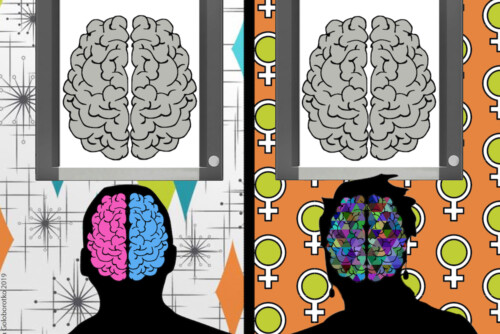What happens when we approach the brain as a shared object of perplexity? What happens when neuroscientists take the time and effort to reflect upon the past, present, and future progress within their own field? What happens when the question of how to study sex and/or gender differences in the brain is opened up to interdisciplinary perspectives and is not treated as a given? What if dissensus in neuroscience research is seen as an opportunity to think about science, bodies, and technologies otherwise?
In this issue of Scholar and Feminist Online, edited by Rebecca Jordan-Young, Giordana Grossi, and Gina Rippon, readers are invited to learn about the complexities of the brain from both feminist neuroscientists and feminist science and technology studies scholars. Each of these scholars comes from their own disciplinary formations. Yet, what ties these essays together is a shared understanding of the stakes that are involved in coming to know the brain, in this particular moment, through the lenses of sex and gender. Many of us find ourselves posing questions related to sex and gender not only in the era of the #MeToo movement, but in a political time and place where scientific research is also under threat. Who would have imagined in the 1990s, when the Science Wars were raging, that scientists would soon be “March(ing) for Science” itself? It turns out, however, that the skills that feminists and social justice advocates have had to hone over the last several decades–institution-building, community organization and outreach, and finding creative ways for obtaining funding support–are now key skills required for everyone in academia, scientists included. In a curious way, this moment may provide us with opportunities for forming new interdisciplinary alliances.
So, what do feminist interdisciplinary alliances and interventions in neuroscience research look like? As one reads these thoughtful and scientifically rigorous articles, it is important to keep in mind that the authors are not in any way interested in dismissing the importance of studying differences in the brain. To suggest such is to miss the importance of their contributions to science. Rather, they present us with neuroscientific methods and practices that move us beyond essentializing and biologically deterministic frameworks. They challenge us to reconsider how we encounter scientific research on sex differences in the brain, and how we process and communicate this knowledge. They also challenge us to take seriously the idea that social inequalities have physiological outcomes, even at the level of the brain – something that feminist, Black, and women of color health advocates have known for some time. This issue of Scholar and Feminist Online teaches us many such lessons about sex, gender, and the brain, while also drawing our attention to the possibilities of thinking about difference in neuroscience, differently.


